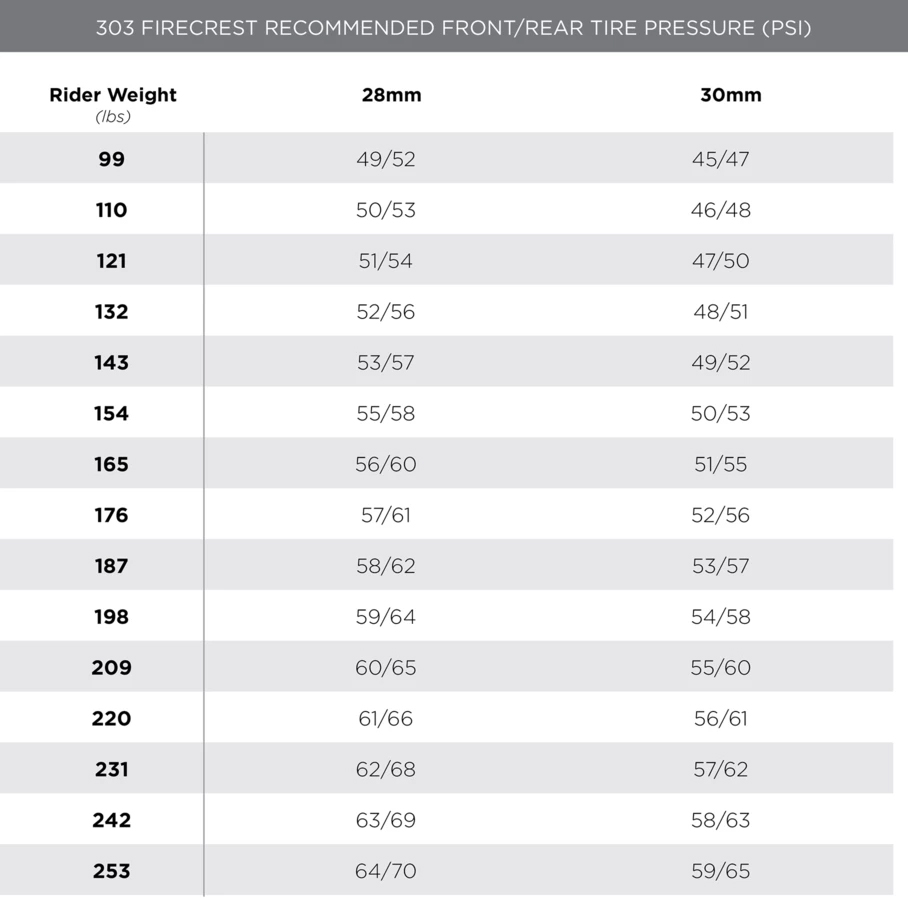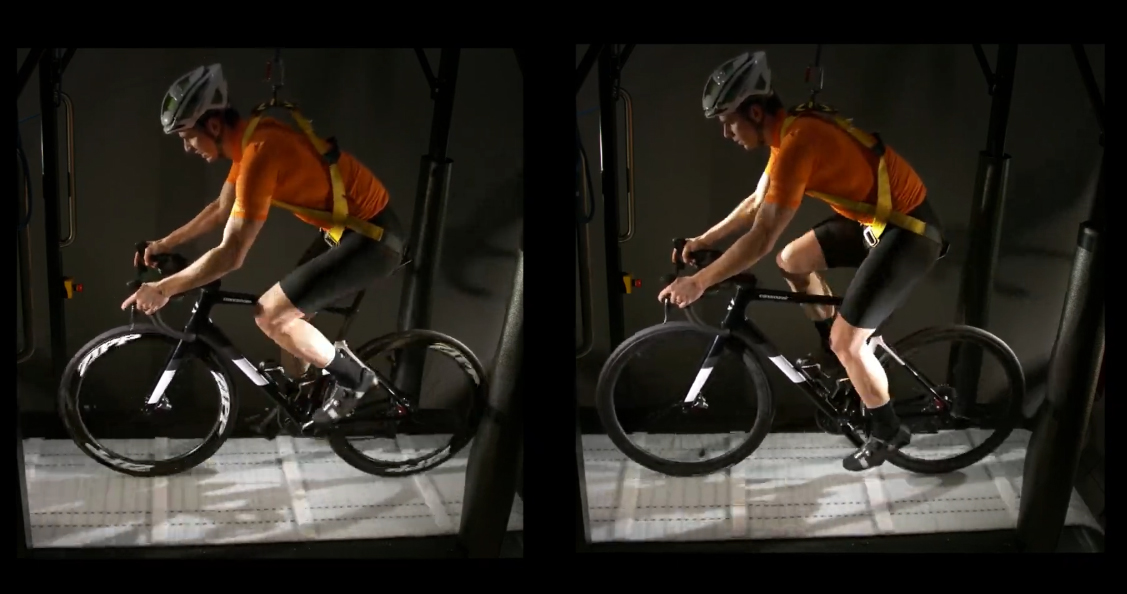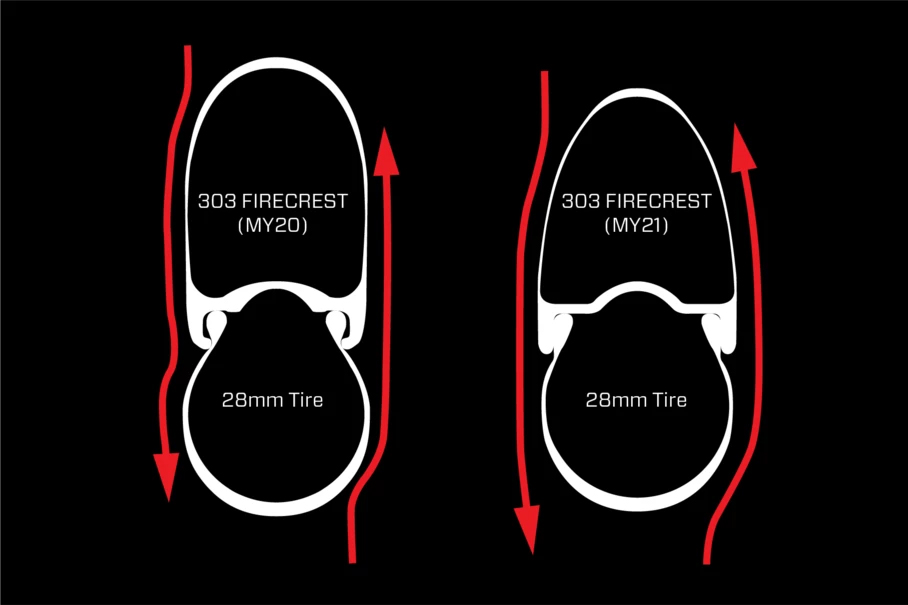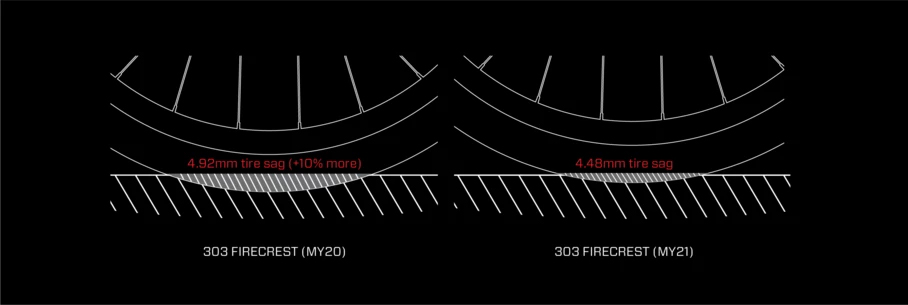Recently, the Zipp 303 Firecrest wheels got a big upgrade. The newest version is faster, lighter, and wider than before and with that comes a new recommended tire pressure chart. Compared to what most riders are used to running, the recommended pressures are low. Really low. With wider rims meant for wider tires, even the heaviest riders are recommended to stay well under 100 psi.

Why So Low?
Tyler went into great detail on the original post, but one of the biggest changes to the rim design was a much wider profile with a 25mm internal width with a hookless bead. That allows a wider tire to better fill in the gap between the edge of the rim and the tire allowing for smoother airflow and better aerodynamics.
But more importantly, the wider rim and wider tire results in a wider and shorter tire contact patch. That results in reduced tire sag, which has been tested to improve the rolling resistance since the tire is deforming less. Note that the contact patch is still the same size, but the shape has changed. With less efficiency lost to the tire deformation, the thought is that you can get away with lower pressures which have a big advantage…
Zipp RollingRoad
… as proven by the Zipp RollingRoad. Essentially a cobblestone treadmill, the RollingRoad helped Zipp to visualize what effect tire pressures have on whole-body vibration. Based on their data from the RollingRoad tests, Zipp found that the difference between ultra-low and high pressure can be as much as 50 watts. That’s 50 watts that you stand to gain by moving to a wider tire on a wider rim while riding at 20mph over various surfaces. Compared to the usual wattage savings touted by aerodynamic components, that’s huge.
For more on Zipp’s Total System Efficiency, check out the link below.


